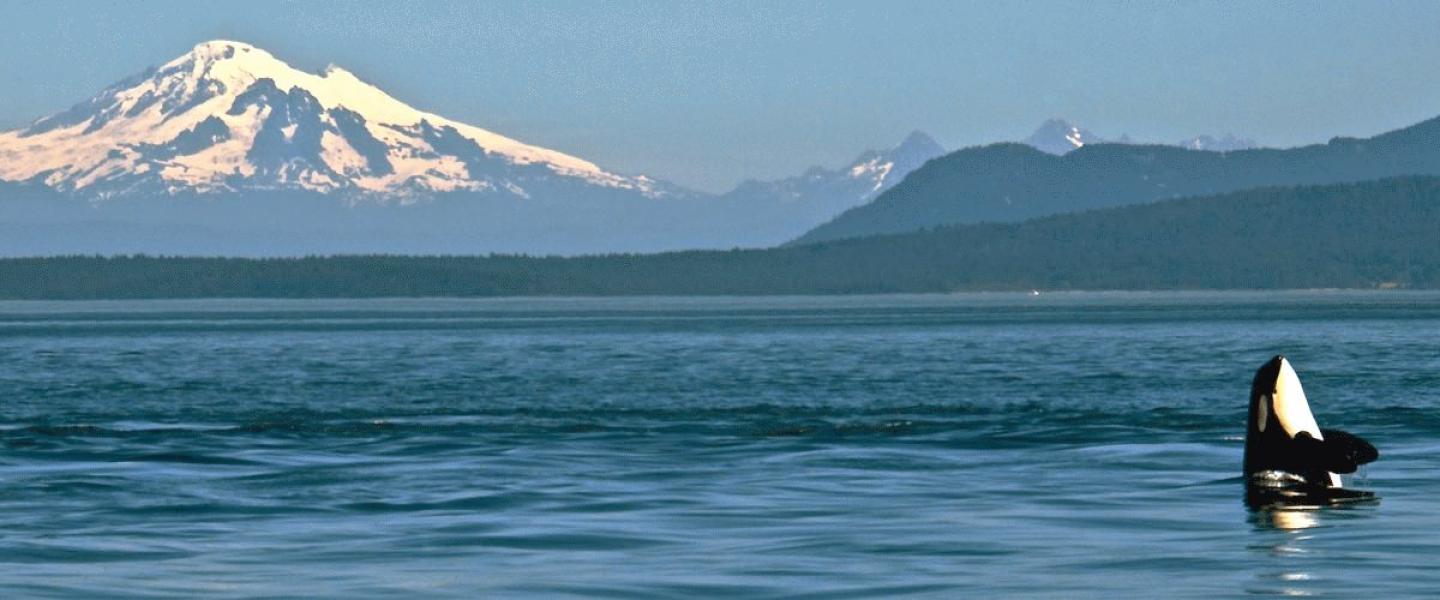
Today was a unique day. Most of the 23 people aboard the Sea Lion were part of a wedding party. The funny thing is, no one told me a couple was getting married on board. It was innocuously written in our reservation book. When I asked the pastor if he needed the space cleared of people for the ceremony he said to me "These are all our guests." And he didn't just mean the people they'd brought with them. There were several guests in the cabin who didn't even realize two people were getting married and they looked about them confused when they heard people clapping and cheering. It was a casual affair with both people clad in jeans. I squealed loudly when I met 'the couple getting married." Upon registering my over-the-top delight they asked me when I was getting married. The afternoon moved easily like this-people cheerfully cracking jokes and ohhing and ahhing over orca whales, everyone in good spirits.
Another unusual occurrence was that we saw two different groups of orcas in two different locales. The first group was off of Orcas Island near The Sisters and the second group was on our way home near Obstruction Island. It was a whale watching extraordinaire. There were 4 or 5 orcas in the first group and 3 or 4 in the second. All of them transient orcas. Paradoxically, transient doesn't mean that the orca travels freely with no place to call home. They do in fact have a home range of about 600 miles. So what does transient mean? It means marine mammal eating. Which is why it was also unusual that a Minke whale passed the first group of transients from only 50 feet away. Transients are cannabalistic in that, they eat other whales. The Minke whale was not attacked and as one of the captains said over the radio (to explain this perceived bizarre behavior), he doesn't stop at every bar he sees. This first group of orcas also had a calf with them, a tiny one, swimming close to its mother. Orcas are birthed tail fluke first. This ensures that they won't drown during the birthing process.
The second group of transients had the amazing T-40. T-40 spends most of his time in southeastern Alaska and rarely makes it to the Salish Sea. His dorsal fin is what makes him so unique; giant, broad at it's base, 5 ft. tall and drooping at the top creating a hook. Dorsal fins fall over in captivity, for reasons only theorized, but in the wild male's dorsal fins droop with age. Its akin to how our skin sags. We also saw a spy hop. That's when they poke their head straight out of the water to take a look at their surroundings. The word actually breaks down into its meaning. Using their tail fluke to propel themselves they literally hop to 'spy' their surroundings. Although they may spyhop or tail lob they rarely breach. Breaching is not a stealthy move because the sound of their entire body slapping the water can travel for miles underwater. Marine mammal hunting transients require stealth because marine mammals are alert and intelligent. To kill their prey they must drown it, beat it to death or chase it to exhaustion. It can take them 2 hours to kill a Stellar Sea Lion. Their dorsal fins are often ripped and ragged because their food fights back. In our modern society, we often forget that the meat on our plate came from an animal that was killed by a human hand. Seeing a transient make a kill can be upsetting to some people, but the orcas don't have the convenience of going to the grocery store and buying packaged steak.
Many wildlife tours use Zodiacs, a kind of zippy, open boat, close to the surface of the water. A guide from Victoria had a giant, male Steller Sea Lion chased by transients jump into his boat to escape. The guide told the passengers to hold on tightly and made a sharp turn throwing the sea lion back into the water. Heart wrenching, but you don't have much of a choice when 2,000 lbs. of panicked flesh, teeth and claws is staring you in the face. There is a much more heartwarming story of a gentoo penguin in Antarctica that was being chased by a group of orcas. This penguin was swimming as fast as he could and outrunning the orcas. That's one of their tactics though, chasing to exhaustion. The little gentoo penguin finally rocketed into the wildlife viewing boat. He actually stood on one of the customer's laps and looked them straight in the eyes. At that point the orcas just gave up and swam away. We see many things in the wild that you would never see at Sea World. We even see them mate.
Support Seeing Orcas in the Wild
Lauren Sands, Naturalist